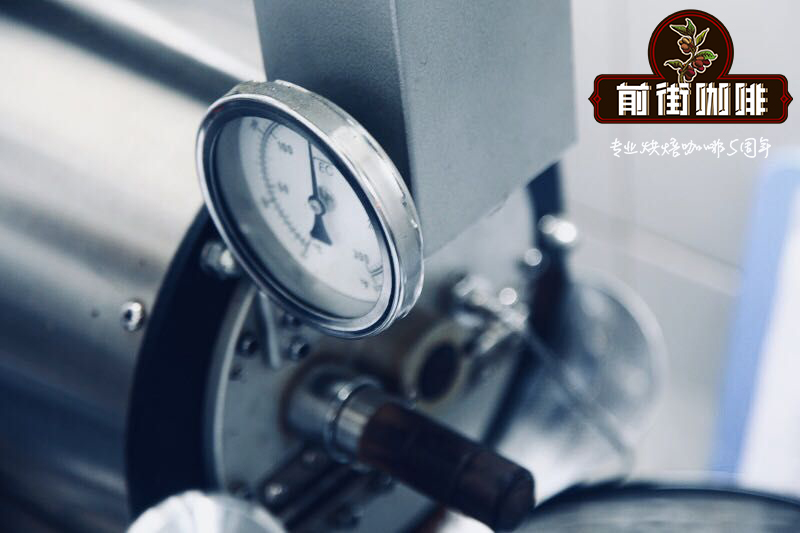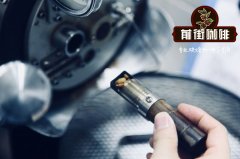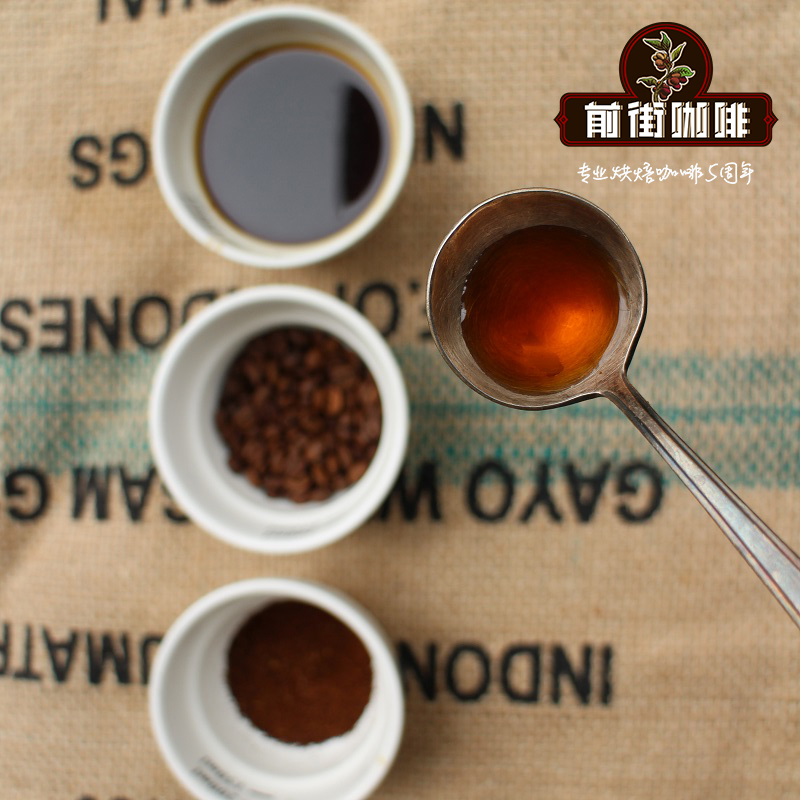Study on the Technical Optimization of Coffee Bean roaster how to improve the uneven Baking of Coffee Bean roaster

Professional coffee knowledge exchange more coffee bean information please follow the coffee workshop (Wechat official account cafe_style)
With the gradual westernization of Chinese living habits, people's demand for coffee is increasing day by day. A cup of coffee every day has become a living habit of many people, and coffee has become another drink choice for people to drink tea. Many people start their day by sipping coffee and even can't bring up their mental work without drinking two or three cups a day. In recent years, walking into the streets of Beijing, Shanghai, Guangzhou and Shenzhen, you can see that there are bags of coffee sacks marked with origin and grade in many personality cafes, alongside bean roasters taller than people, announcing: "the era of individual coffee in our own exquisite roasting manor is coming!" More coffee lovers like to bake coffee that suits their own taste, so it is suitable for individuals (families) to use coffee roasters on the market.
With the rise of the trend of personalization, everything is now focused on personalization, regardless of fashion, technology or catering pursuits, and now even coffee is about personal taste. Some cafes have launched personalized services, which can be prepared and baked according to customer needs, turning coffee into a unique personalized taste. What's more, some coffee lovers like to make and roast their own coffee with personalized flavor. as a result of this popular trend, there are all kinds of coffee roasters in the market. the common types of coffee bean roasters include hot air type, direct fire type and semi-hot air type. The aforementioned fire includes not only gas stove and charcoal fire, but also infrared and electric heating pipes.
The advantages of the above hot air coffee roaster are high thermal efficiency, fast heating, relatively uniform heating of raw beans, and easy to control the baking process, but also because it is easy to cause excessive heating, resulting in beans "entrainment", and too high temperature is easy to make the caramelization reaction insufficient. Although the direct-fire coffee roaster has a long baking time, it makes the caramelization reaction more sufficient, but it is easy to cause uneven baking, and it is easy to scorch coffee beans and form a bitter taste if the heat is not well controlled. Therefore, the semi-direct fire semi-hot air coffee roaster which combines the advantages of the above two kinds of coffee roaster is the mainstream of commercial roaster at present [5].
II. Purpose of the study
Because the semi-direct fire semi-hot air machine has the advantages and disadvantages of both direct fire type and hot air type, this study discusses how to improve its function in view of the lack of baking of a semi-direct fire semi-hot air coffee roaster on the market, so that it can give full play to the advantages of direct fire type and hot air type, and at the same time avoid the mixed situation of "tricolor beans" due to uneven heating during baking.
Third, the principle of coffee baking
The whole roasting process of coffee is a bit like roast meat, except that what is roasted is raw coffee beans, which are subjected to heat conduction, heat convection and thermal radiation during the whole roasting (heating) process. make it produce browning reaction, caramelization reaction, Mena reaction and dry distillation, etc., and develop the aroma and taste of coffee, from the original insipid raw beans to be able to release the charming flavor of coffee. At the same time, each fruit contains the personality-sour taste, sweet taste, bitter taste incisively and vividly spread out. Therefore, baking is the most important station for every coffee bean to outline its character and breed its fragrance.
The average roasting time of coffee beans is about 13murl 16 minutes (depending on the water content and baking degree of raw beans), the temperature can be as high as 232 ℃, and the heating process must undergo several chemical changes, making two crisp sounds like popcorn and losing 15% of the moisture of 25% of the weight of Murray. The main processes include [6]:
Dehydration:
Coffee beans smell like raw grass before they are roasted, and some dried raw beans even have a bad smell of fermentation! At this time, raw coffee beans generally contain about 10% of the water, which will be the first thing to come out of the coffee beans when roasting begins, so the initial stage is called "dehydration". At the same time, coffee beans begin to "caramelize". In the process of caramelization, sugars, fats, proteins and amino acids in coffee beans begin to interact and combine with each other. the result is from more than 200 substances at the beginning to more than 800 substances in the end.
The first explosion:
At this time, the temperature is about 190200 ℃. At first, sporadic bursting fields will be heard, then the sound will gradually gather, and then gradually sparse and even end the bursting sound (because the conditions of each baking raw beans are different, so the temperature will be slightly different). At this time, the color of coffee beans is no longer the khaki at the beginning, but a slightly light brown color, and the general coffee beans will be roasted to at least this degree before starting the pot. We call this baking degree "shallow baking".
The second explosion:
The temperature at the end of the first explosion will be about 205 degrees, and then as the heating continues, the color of the coffee beans will gradually become darker, and the coffee beans will burst again when the temperature reaches 230 degrees Celsius. This is the "second explosion". The sound of the second explosion is small and high-frequency, which is different from the first explosion. At the same time, the film on the surface of the coffee bean will fall off, the color of the coffee bean entering the second waterfall will be darker, and the surface will begin to shine. Generally, the baking degree is defined as "medium baking" from the end of the first explosion to before the second explosion, while the violent explosion of the baking degree from the beginning of the second explosion to the middle of the second explosion is "medium-deep baking".
Deep baking stage:
After the end of the second explosion, the coffee beans become oily black and emit a lot of smoke, at which point the temperature is usually not more than 240 degrees Celsius. If you want to do further deep roasting, you have to raise the temperature to more than 240 degrees, which is probably the limit of the depth of roasting coffee beans.
IV. Research methods
In order to enable the students participating in this study to have a better understanding of the baking process of direct-fire, hot-air and semi-direct-fire semi-hot air coffee roasters, and to facilitate the smooth progress of the roaster optimization process, a simple roaster design is adopted in this study. In the design of the direct roaster, the main heat source in the baking process comes from the heat conduction (bottom heating) of the pot in the coffee roaster, followed by thermal radiation and thermal convection. Whether this kind of roaster can be baked successfully depends on whether the temperature is properly controlled and whether it is stirred evenly. The design of the hot air roaster is mainly to use the blower to absorb the air, then let the air raise its temperature through a heating source (heating coil), and use hot air as the heating source to bake coffee beans. hot air can not only provide the temperature needed for baking, but also use the force of air flow to stir coffee beans, so that coffee beans are heated evenly, and the heating effect is mainly thermal convection.
In fact, semi-direct baking is similar to direct baking. Miso roasting is like direct baking, in which coffee is heated (heat transfer) directly from the bottom of the pot in the roaster. At the same time, ventilation equipment is added to introduce the heated hot air outside the baking container into the baking room to improve baking efficiency. Another function of this ventilation device is to absorb the exfoliated silver skin (the film attached to the outer layer of coffee seeds) to prevent the silver skin from burning because of the high temperature in the baking room, thus affecting the taste of coffee beans. The semi-direct type semi-hot air roaster has the advantages and disadvantages of both the direct type and the hot air type. When the hot air is turned on larger and the speed is faster, the baking result is closer to the hot air type; on the contrary, the more close to the direct type, the simple functional structure of the semi-direct type roaster is shown in figure 7.
V. results and discussion
In addition, through the understanding of the operation of this coffee roaster, we found that the cause of the tricolor beans was designed at the air inlet. The original coffee roaster was designed to facilitate the smooth discharge of coffee beans after roasting, and there was a row bean outlet. However, the original design also put the hot air inlet close to the coffee bean outlet, causing hot air to enter the coffee roaster while inhaling part of the cold air outside the pot. As a result, the average temperature of the air entering the pot decreases, and the temperature of the imported air is lower than that of the coffee baking pot. The baking function of this roaster can be improved by isolating the hot air inlet from the coffee bean outlet. Figure 9 shows that the coffee roaster is roasting after the revised design.
Important Notice :
前街咖啡 FrontStreet Coffee has moved to new addredd:
FrontStreet Coffee Address: 315,Donghua East Road,GuangZhou
Tel:020 38364473
- Prev

Principle of three heat conduction modes of coffee roaster which brand of coffee roaster should be disassembled?
Professional coffee knowledge exchange more coffee bean information please pay attention to the coffee workshop (Wechat official account cafe_style) roaster three major heat conduction mode: the biggest feature is that the drum has a small hole, the fire can directly burn bean meter, it is easy to scorch black spots, or scorched beans, the heat is not easy to control. Often scorched the bean table, cut open the beans, but the bean stamens are not fully ripe. At present, it is rare to see straight.
- Next

Why is coffee bitter? Is the bitterness really bad? What if the coffee is bitter?
Professional coffee knowledge exchange more coffee bean information Please follow the coffee workshop (Wechat official account cafe_style) Brazilian coffee bitterness has always been an unpleasant term in fine coffee, good coffee should be sweet and delicious, well-balanced taste, maybe a little sour, and do not need to add sugar to make the coffee taste good. But what makes coffee bitter? The bitterness is really so
Related
- Beginners will see the "Coffee pull flower" guide!
- What is the difference between ice blog purified milk and ordinary milk coffee?
- Why is the Philippines the largest producer of crops in Liberia?
- For coffee extraction, should the fine powder be retained?
- How does extracted espresso fill pressed powder? How much strength does it take to press the powder?
- How to make jasmine cold extract coffee? Is the jasmine + latte good?
- Will this little toy really make the coffee taste better? How does Lily Drip affect coffee extraction?
- Will the action of slapping the filter cup also affect coffee extraction?
- What's the difference between powder-to-water ratio and powder-to-liquid ratio?
- What is the Ethiopian local species? What does it have to do with Heirloom native species?

